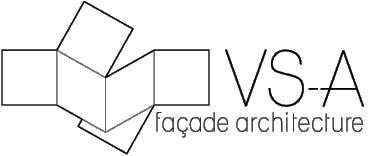Structural Calculations
Each VS-A company has inhouse structural engineers who deal with safety, solidity and value-engineering. Different tools are used to calculate accurately different type of components, using 2D or 3D models.
Expertise
Structural Calculation
Each VS-A company has inhouse structural engineers who deal with safety, solidity and value-engineering. Different tools are used to calculate accurately different type of components, using 2D or 3D models.
Complex geometry
Each VS-A company has inhouse architects or engineers who deal with complex geometry. The world is changing: more and more challenging geometries appear in the Architects’ projects, and more and more suppliers and contractors are able to make those projects become real. Although almost everything is feasible, we always look for some geometric logic that allows to make significant cost-savings and get reduced construction tolerances on site.
Rain Water
Calculating the quantities of rainwater to collect and drain is part of the design of roofs and awnings. It becomes slightly different when it concerns all the building’s envelope, including the facades, and when it allows to predict areas exposed to more stain.
Thermal analysis of heat loss: calculating the heat flow, evaluating the risk of condensation
Heat-loss is a significant concern since 1972/3, with increasing interest is making energy efficient constructions. In climates with a cold winter, envelopes with a reduced heat loss coefficient will reduce the energy consumption for heating. The more and more airtight façade obliges us to evaluate the risk of condensation, and find appropriate solutions. Although it has less dramatic effects, heat gain by conductivity in summer can be a concern in some situations.
Energy analysis heat gain, efficiency of solar protection combined with glass
Developing efficient strategies to reduce heat gains in summer has become a complex topic since the glass to wall ratio remains very high on most of the projects. Beyond selecting the appropriate glasses and coatings, additional devices can modulate the heat gain factor accordingly to the specifications. Sustainable strategies encourage for variable or season sensitive devices, whose performances need sophisticated tools to be correctly estimated.
Illustration: Tencent BJ, Casablanca, DTown
Daylight factor
To develop sustainable architecture, energy and comfort criteria must be balanced. One of the most significant criteria for comfort is natural daylight, and all the rating systems for sustainability include the daylight factor. This impacts many aspects of the buildings envelope and sophisticated tools are necessary to select the best parameters for all the components in and around the glazed areas.
Illustration: Kuwait competition with Nasrine Seraji
View towards outside
Providing nice views from inside to outside is one of the benefits of inserting wide glazed areas in a project’s envelope. But glass areas are usually subdivided, and the connecting frames are blocking the view. So do the structural columns and the solar protection devices. The total free view can be a criteria for the user’s comfort, or become an essential functional criteria like for air traffic control towers.
Illustraton: Strasbourg airport
Glare (interior and exterior)
Glare is an important problem to be solved, for offices, sport centers and some cultural buildings. It can also become a problem for pedestrians, car drivers or neighbors when the shape of the building interacts negatively with the sunrays that might get concentrated in an unusual and sometimes dangerous way. This has become a hot topic since the sunlight reflection of envelopes with complex geometries can hardly be anticipated without computational tools.
Illustration : iCarbonX.
Cinematic (operable or movable parts)
Windows and doors are the common mobile parts of an envelope. BMU and solar blinds can come in addition to this list with possibly less common requirements. Contemporary architecture creates sometimes unexpected and new constraints to be considered. Finding tailor-made solutions becomes a must, and with some imagination, sometimes very easily solutions can be found.
Illustration : swing door in an inclined façade, p. 67 of VS-A Index I + triple-street.
Value-engineering
There’s no Client that’s willing to spend more than what he gets. But our aim is also to find the solutions that comply with the design intend with less. The most significant savings are found in the early design stages, while in the later stages, it’s only a matter of small adjustments by balancing quality and cost.
Illustration: value engineering on profiles, p.342 and 343 of VS-A Index II
PMU testing
Any innovative design should have its characteristics confirmed not only be calculations but also by testing. Full scale mock-up testing is an important moment for both the designer and the contractor. Every weak point should be identified, with appropriate remedial solutions.
Illustration: Daishin, p. 119 of VS-A Index II + p. 104 VS-A Index I.
BMU
The characteristics of the envelope will quickly decline if there isn’t an appropriate maintenance strategy that allows cleaning, but also repairing and eventually replacing of some components. The visual and structural impact of the BMU is not minor, therefor they are to be integrated in a very early stage in the design process.
Illustration: p. 106, VS-A Index I.
VMU
Many factors are making each project different from another one. And although rendering tools allow the designers to illustrate what they are looking for, the reality will always be a more or less different experience. Designing a visual mock-up requires some experience so that it will reflect as much as possible the future project.
Illustration: VS-A Index I, p. 105.














